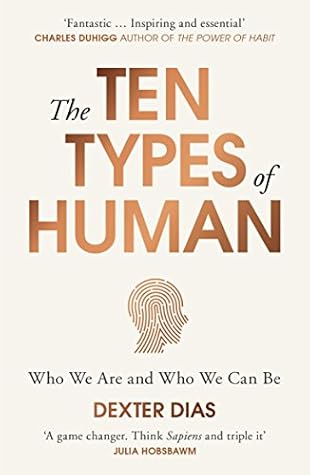More on this book
Community
Kindle Notes & Highlights
by
Dexter Dias
Read between
August 15 - August 28, 2021
Where there are gaps in the account or for reasons of confidentiality and/or security I have had to find a substitute, my approach has been informed by that of John Berendt in the seminal Midnight in the Garden of Good and Evil, which is to combine the ‘strict non-fiction’ (his term) with elements constructed with the intention of remaining, as Berendt puts it, ‘faithful to the characters and to the essential drift of events’, but those are acts, it is essential to emphasise, that necessarily draw on both the inquisitional and imaginative faculties, concisely described by John le Carré (in a
...more
The approach and moral stance of this book are a world away from ‘social Darwinism’ – in fact, they strenuously oppose it. Evolution is a fact, not a value.
There have been many analyses and postulations about the complicated and fragmented nature of the self. Neuroscientist V. S. Ramachandran puts it starkly: the idea of ‘a single unified self “inhabiting” the brain may indeed be an illusion’. Robert Kurzban and Athena Aktipis state that ‘the self that talks and controls muscles is but one subsystem in the modular architecture’. Psychologists Douglas Kenrick and Vladas Griskevicius have identified from the mass of our complex behaviour a number of ‘subselves’ – versions of ourself subconsciously selected by our nervous system to take the
...more
Thus it is certainly true that our moral condemnation of harmful actions in significant part comes from imagining the pain of others, but that is not the whole picture. We also envisage what it would feel like for us to perform the act. It is our revulsion at imagining ourselves being the killer – and not just imagining the suffering of the victim.
‘The thing to understand is that the human child brain is not just a mini-sized adult brain. The neurobiology shows that it is a specific adaptation that maximises the survival chances of the infant human animal as it develops. And it depends crucially, critically on species-expected caregiving.’
Therefore the growing consensus is that firm evidence of reciprocity in non-human animals is rare. It may even be to some extent illusory – behaviour that appears to be cooperative, but that in fact is a proxy for other things: mutualism (symbiotic beneficial joint action) or manipulation (coercion by a more dominant individual).
For animals that are fertilised internally, this is always a risk. It is a risk to humans throughout the world. A study in the UK of what is called ‘paternal discrepancy’ found that around 1 in 25 fathers in Britain may not actually be the biological parent of the child they believe to be theirs. In genealogy this is called a ‘non-paternity event’. As the old saying (some say originating in the Deep South of the United States) has it: ‘It is mother’s baby and father’s maybe.’
This is not justifiable. He is referring to a Liverpool John Moores University study based on contested paternity testing. It drew only from contested situations, making it not valid to make population-wide estimates from.
Remember this is an idea, a way of thinking about an immensely complex process. A way of trying to understand it better.
Therefore human behaviour is not determined; it is not dictated. There is variation and individuality and quirk and character and personality. Therefore none of this is infallibly predictive; it is at best irksomely probabilistic. But: young men do tend to give more when a beautiful woman is in the room. They really do.
Kenrick, D. and Griskevicius, V. (2013), The Rational Animal: How Evolution Made Us Smarter Than We Think, New York: Basic Books. Kurzban, R. (2012), Why Everyone (Else) Is a Hypocrite: Evolution and the Modular Mind, Princeton, NJ: Princeton University Press.


